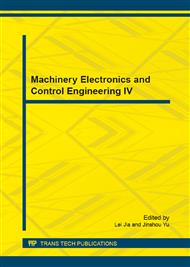[1]
Arakelyan S.M., Morozov V.V., Yugov V.I., Prokoshev V.G. New laser technology radically improve the wear resistance of critical parts in mechanical engineering / High Tech in mechanical engineering, 2012, # 6, pp.30-35.
Google Scholar
[2]
Li Y., Zhou L., He W., He G., Wang X., Nie X., Wang B, Luo S., Li Y. The strengthening mechanism of a nickel-based alloy after laser shock processing at high temperatures / Sci. Technol. Adv. Mater. 14 (2013).
DOI: 10.1088/1468-6996/14/5/055010
Google Scholar
[3]
Montross C.S., Wei T., Ye L., Clark G., Mai Y. W. Laser shock processing and its effects on microstructure and properties of metal alloys: a review Int. J. Fatigue 2002 24 1021–36.
DOI: 10.1016/s0142-1123(02)00022-1
Google Scholar
[4]
Grigoryants A. G, Safonov A.N. Laser technique and technology: Part 7: Methods of surface laser treatment / Edit. by A.G. Grigoryants. - M: Vysshaya Shkola, 1987. - 191 p. (in Russian).
Google Scholar
[5]
Gallagher R. Finite elements method. - M: Mir, 1984. -428 p. (in Russian).
Google Scholar
[6]
Kutateladze S.S. Heat conduction and hydrodynamic resistance: Reference manual. - M: Energoatomizdat, 1990. – 367 p. (in Russian).
Google Scholar
[7]
Automation of the physical research and the experiment: computer measurement and virtual instruments based on Lab VIEW 7/Ed. by Butyrina P. A. -M: DMK Press, 2005. 264p. (in Russian).
Google Scholar
[8]
Shlegel A.N. Increasing resistance of working edges iron glass molds based on continuous laser hardening. Dissertation PhD. Moscow: MGTU Stankin, 2011, 185 p. (in Russian).
Google Scholar
[9]
Morozov V.V., Ivanchenko A.B., Shlegel A.N. Mathematical model simulation heat edge connector parts in molds during laser thermostrengthening/ Vestnik MGTU Stankin, 2011 #1, pp.47-52 (in Russian).
Google Scholar
[10]
Morozov V.V., Ivanchenko A.B., Shlegel A.N. Study of laser radiation hardened durability undercuts glass molds / Uprochnyayuschie technologii I pokryitia, 2007, #7, pp.52-56 (in Russian).
Google Scholar


